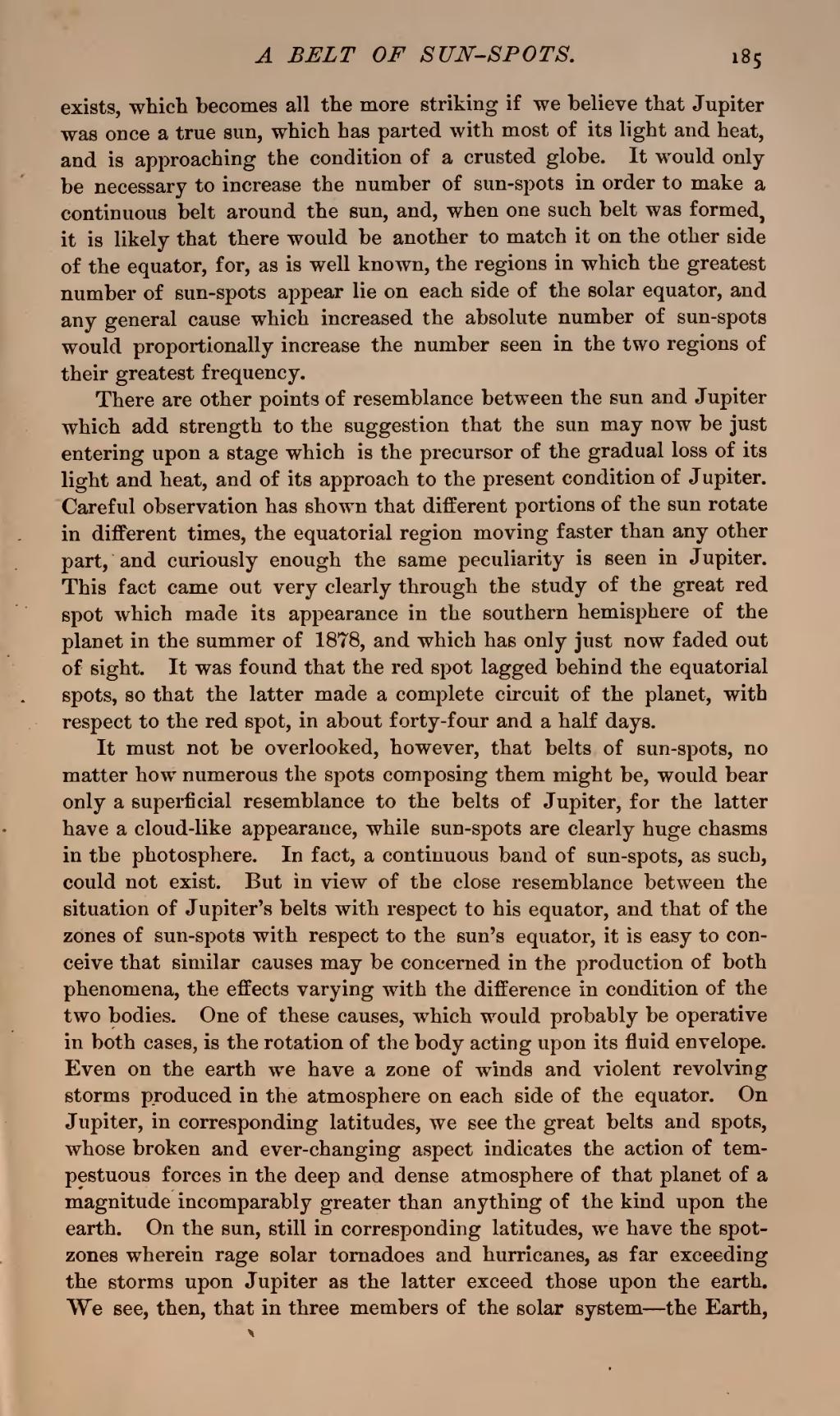exists, which becomes all the more striking if we believe that Jupiter was once a true sun, which has parted with most of its light and heat, and is approaching the condition of a crusted globe. It would only be necessary to increase the number of sun-spots in order to make a continuous belt around the sun, and, when one such belt was formed, it is likely that there would be another to match it on the other side of the equator, for, as is well known, the regions in which the greatest number of sun-spots appear lie on each side of the solar equator, and any general cause which increased the absolute number of sun-spots would proportionally increase the number seen in the two regions of their greatest frequency.
There are other points of resemblance between the sun and Jupiter which add strength to the suggestion that the sun may now be just entering upon a stage which is the precursor of the gradual loss of its light and heat, and of its approach to the present condition of Jupiter. Careful observation has shown that different portions of the sun rotate in different times, the equatorial region moving faster than any other part, and curiously enough the same peculiarity is seen in Jupiter. This fact came out very clearly through the study of the great red spot which made its appearance in the southern hemisphere of the planet in the summer of 1878, and which has only just now faded out of sight. It was found that the red spot lagged behind the equatorial spots, so that the latter made a complete circuit of the planet, with respect to the red spot, in about forty-four and a half days.
It must not be overlooked, however, that belts of sun-spots, no matter how numerous the spots composing them might be, would bear only a superficial resemblance to the belts of Jupiter, for the latter have a cloud-like appearance, while sun-spots are clearly huge chasms in the photosphere. In fact, a continuous band of sun-spots, as such, could not exist. But in view of the close resemblance between the situation of Jupiter's belts with respect to his equator, and that of the zones of sun-spots with respect to the sun's equator, it is easy to conceive that similar causes may be concerned in the production of both phenomena, the effects varying with the difference in condition of the two bodies. One of these causes, which would probably be operative in both cases, is the rotation of the body acting upon its fluid envelope. Even on the earth we have a zone of winds and violent revolving storms produced in the atmosphere on each side of the equator. On Jupiter, in corresponding latitudes, we see the great belts and spots, whose broken and ever-changing aspect indicates the action of tempestuous forces in the deep and dense atmosphere of that planet of a magnitude incomparably greater than anything of the kind upon the earth. On the sun, still in corresponding latitudes, we have the spot-zones wherein rage solar tornadoes and hurricanes, as far exceeding the storms upon Jupiter as the latter exceed those upon the earth. "We see, then, that in three members of the solar system—the Earth,
